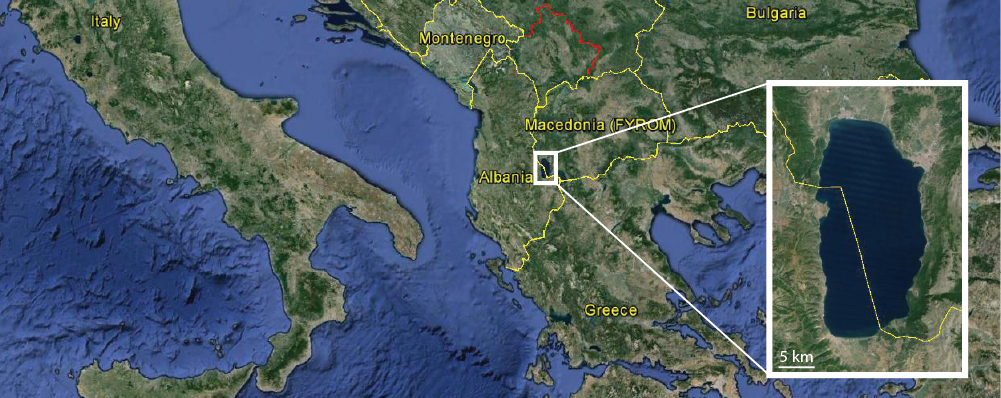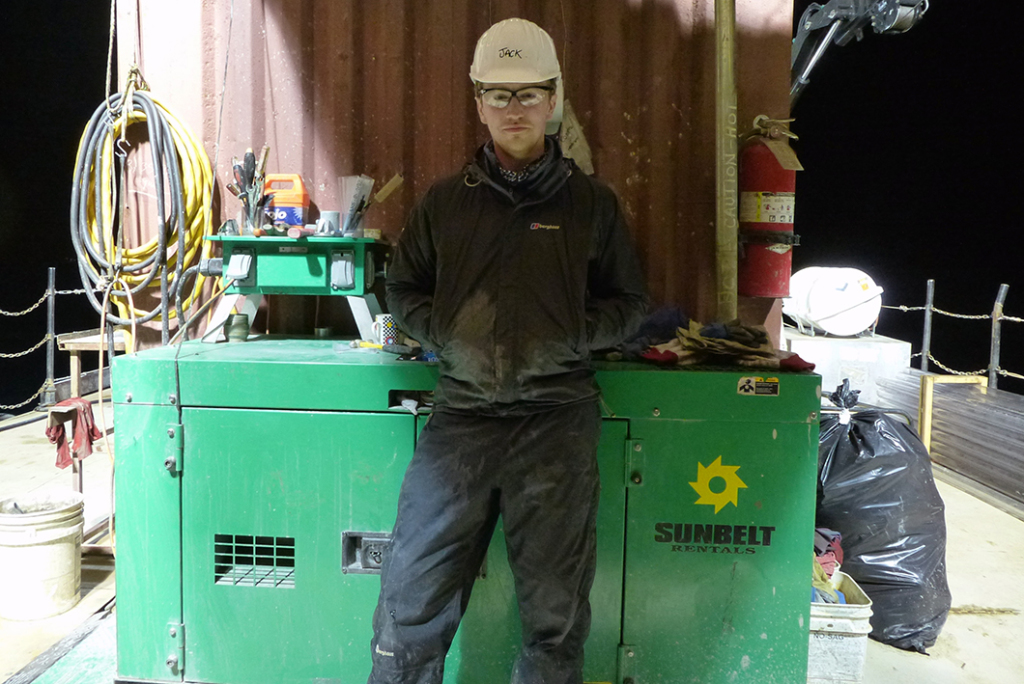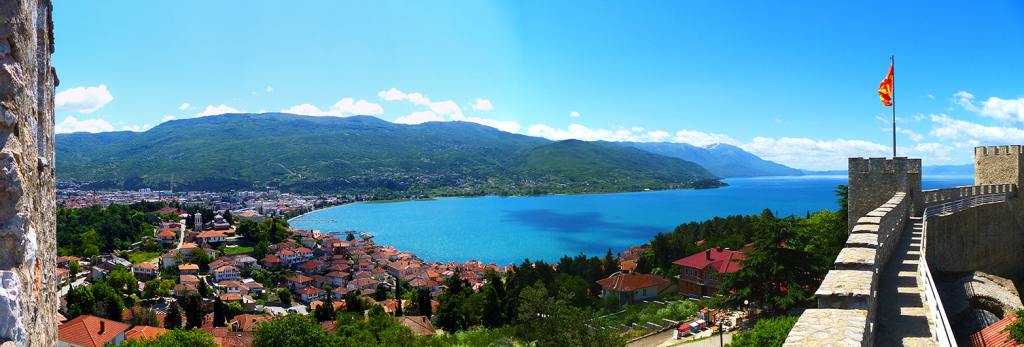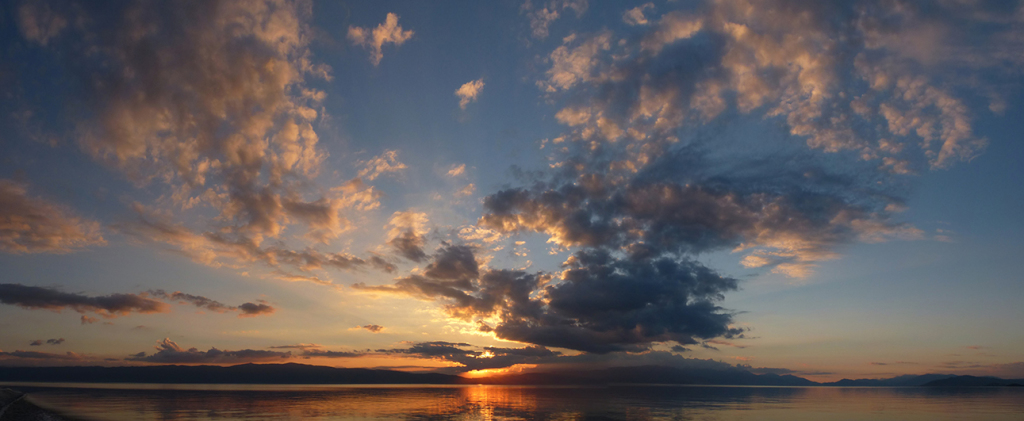Jack Lacey is a PhD student within the Centre for Environmental Geochemistry and in this first blog for Travelling Geologist he tells us about the Lake Ohrid SCOPSCO project and drilling through over a million years of Mediterranean history.
Lake Ohrid is one of the world’s oldest lakes and is renowned for its high degree of biological diversity. The lake contains hundreds of endemic species, and when combined with a sediment record dating back to the Early Pleistocene, it provides an excellent opportunity to study the links between geology, climate and evolution.
In spring 2013 I travelled to Macedonia to be part of the international team tasked with drilling and recovering the sediment for the ICDP SCOPSCO project. The US corporation DOSECC conducted the drilling operation and over a period of 2 months a total of 2100 m of sediment was recovered from four sites in water depths up to 260 m. The main target site was in the centre of the lake where hydro-acoustic data suggested extensive undisturbed sediments, from which 568 m was drilled with a 95% composite recovery.

The Deep Lake Drilling System (DLDS) of Drilling, Observation and Sampling of Earth’s Continental Crust (DOSECC), the barge operated 24/7 in two 12-hour shifts
Whilst in Macedonia there was time to explore, and other than walking in the mountains or go-karting, the town of Ohrid is a great place to visit. A short hike up a hill in the centre of the town brings you to Samuil’s Fortress, which if nothing else gives you a fantastic view of lake…
The cores recovered from Lake Ohrid are now being opened, documented and scanned (XRF, MSCL) at the University of Cologne in Germany. Alongside this I am looking at the carbonate content of the sediments using isotope techniques, which primarily provides information on water balance. To fully understand past changes in isotope values the contemporary isotope hydrology must be studied, and so a high-resolution Holocene record has been used, which will act as a modern calibration (Lacey et al. 2014).
Initial findings suggest the cores span over 1.2 million years, and confirm that Lake Ohrid is highly sensitive to climate and environmental change. To find out more about the preliminary results check out our Scientific Drilling paper (Wagner et al. 2014).
Further information is available on the SCOPSCO website.
I also blogged throughout the Macedonia fieldwork, so to find out more about how you drill an ancient lake, take a look!
Find out more about Jack here and follow him on Twitter @JackHLacey.
![]() This work is licensed under a Creative Commons Attribution-NonCommercial-ShareAlike 4.0 International License.
This work is licensed under a Creative Commons Attribution-NonCommercial-ShareAlike 4.0 International License.




